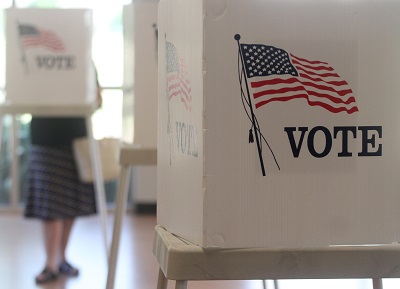Endgame: Tariffs, Technology and China
This opinion piece by Bay Area Council Economic Institute Senior Director Dr. Sean Randolph appeared in the Silicon Valley Business Journal in April 2018.
The United States and China are aggressively sparring over tariffs, trade and technology. The real issue isn’t about the lists of tariffs that each side has announced, but what endgame both sides expect. As an investor in China and a major destination for investment from China, for Silicon Valley the outcome matters.
Let’s be clear that the latest tariffs aren’t a Trump protectionist fluke. Action is needed. China is building an innovation system based not just on its considerable capabilities, but also on laws and policies designed to extract technology from foreign partners.
One of those strategies, Made in China 2025, identifies priority technology sectors where China plans to lead global markets, displacing foreign technologies as rapidly as possible. Where it can’t develop those technologies independently, the plan calls for China to acquire them. In the meantime, Western companies are required to store their China-generated data on government servers, take on Chinese joint venture partners as a condition of doing business, and transfer their technology and source code.
This is happening as China’s market is off limits to companies such as Facebook, Google and Twitter, and key sectors are reserved for Chinese companies. Internet technologies must be “secure and controllable” — by the government. All of this inherently advantages Chinese companies and disadvantages foreign ones.
There are two types of tariffs announced by the United States: first, industry-specific tariffs on steel and aluminum, imposed on national security grounds (a risky precedent); and second, tariffs to address the bilateral trade deficit and rebalance the technology playing field. There, the Trump administration announced an initial tranche of $3 billion, which was met by a $3 billion response from China. Then the U.S. announced a $50 billion list, met again by $50 billion from China, after which President Trump suggested another $100 billion. What happens next?
What should happen is that both sides go into a room and make a deal. The tariff announcements are designed to get China’s attention, show we’re serious, and get them to negotiate. Past administrations from both parties have repeatedly tried negotiation, but with little lasting effect. The Trump team has chosen to show its muscle up front.
This can work, and taking a tougher stance with China has bipartisan support. But there are risks. Tariffs are a crude tool, with little connection to technology policy. And undisciplined U.S. tactics could backfire if both sides actually implement the tariffs.
Last year, California exported $16 billion in goods to China, many of which show up on China’s list. California’s agricultural interests — high-value nuts, wine and grapes — are particularly vulnerable. The aircraft industry, cars and chemicals are also targets. Higher steel and aluminum prices will increase the cost of everything from building materials to Teslas to craft beer cans.
Trump has said “it’s easy to win a trade war.” That’s wrong — in a trade war, everybody loses. As the world’s two largest economies, China and the United States have to live together. President Xi’s statement this week that China will accelerate its market opening is a signal that China understands the game.
In the end, the U.S. should press for a market opening that’s not just near-term and tactical, but long-term and structural. The best strategy would be to orchestrate our trading partners in a united front against China’s trade infractions, initially in the World Trade Organization, and bilaterally target Chinese restrictions with reciprocal measures — if negotiations are unproductive.
But we have the process we have. It’s in the administration’s court now to manage the process, make a deal, and minimize the damage that California and other businesses will suffer from a real trade war.





